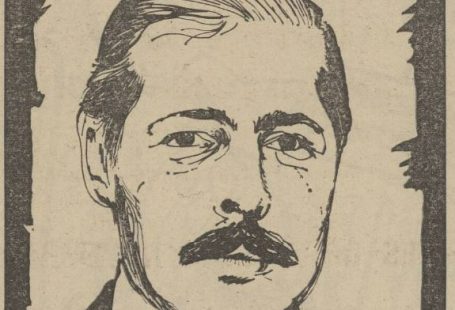This week on The Archive we have added 63,650 brand new pages, giving us a total today of 39,709,184 pages, as we move ever closer to that spectacular landmark of 40 million pages available to view.
With one brand new title added this week, covering the county of Somerset, we have updates to regional titles from across England, from Yorkshire in the north to Plymouth in the south, by way of Birmingham and Shropshire.
So read on to find out which new title we have added this week, as well as to discover the new pages that we have added to our specialist cinema title the Kinematograph Weekly, and how during the 1920s battles from the First World War were brought to the cinema screen.
Register now and explore the Archive
We are delighted to welcome the Somerset Guardian and Radstock Observer to our collection this week. A local weekly newspaper published in the Somerset town of Radstock, near Bath and known for its historic ties to the coal-mining industry, this publication was founded in 1893. Covering the nearby town of Midsomer Norton, as well as the surrounding villages including Peasedown St John, it appeared every Thursday priced at one penny.
Somerset Guardian and Radstock Observer | 13 January 1900
In 1962 the Somerset Guardian and Radstock Observer merged with the Somerset Standard, whilst in 1984 it changed its name to the Somerset and Avon Guardian. Reverting to simply the Somerset Guardian over a decade later in 1996, this newspaper is still published to this day.
We have so far added the years 1899 to 1903 to this title: watch out for more updates as we plan to add pages from right up until 1962.
What other updates do we have this week? Well, we have updates to cinema industry publication Kinematograph Weekly, which cover the years 1923 to 1930. The golden years of silent film, the 1920s saw a decline in British produced films reaching cinema screens. By 1926 only 5% of films shown in Britain were British produced, many studios having closed during the ‘Slump’ of 1924, this being due in part to American competition.
Kinematograph Weekly | 8 March 1923
But this did not stop the publication of the Kinematograph Weekly – especially as a new and exciting technological advancement was revolutionising film – sound! The ‘talkies’ hit the cinemas by the late 1920s, with Britain’s first sound feature recognized as Alfred Hitchcock’s Blackmail, which was released in 1929. The Kinematograph Weekly was of course on hand to offer all the latest advice and news regarding the ‘talkies,’ as the 1930s dawned with a new golden age of cinema.
We have updates to five of our regional titles this week. You’ll find extensive updates to Yorkshire title the Halifax Evening Courier, to which we have added over 20,000 new pages from the 1920s and 1930s, as well as updates to fellow Yorkshire title the Yorkshire Post and Leeds Intelligencer.
Moving a little further south (and a little to the west), we have added the year 1853 to the Consverative Shrewsbury-based title Eddowe’s Journal, and General Advertiser for Shropshire, and the Principality of Wales. You’ll also find updates this week to historic Midlands title the Birmingham Daily Gazette, which was founded in 1741 by Thomas Aris.
Our final updates this week are to the Western Morning News. Founded in 1860 by William Saunders and Edward Spender, this title has been published continuously ever since then, without a break (even during the General Strike of 1926). A daily title, the Western Morning News has a wide geographical reach, covering Devon, Cornwall, the Isles of Scilly and even stretching to Somerset and Dorset.
Reconstructing Ypres
During the 1920s, many battles of the First World War (or Great War as it was known then) were reconstructed and made into silent films. One such of these was Ypres, which saw heavy and devastating fighting between 1914 and 1918. During the Second Battle of Ypres, the German army deployed poison gas, whilst the Third Battle of Ypres (also known as Passchendaele) saw between 400,000 to 800,000 casualties.
The film version of Ypres was released in 1925 by British Instructional Films. Directed by Walter Summers, it featured reconstructions performed by members of the British Armed Forces.
Daily Mirror | 28 September 1925
It was quickly a hit, as the Kinematograph Weekly reveals. On 1 October 1925 adverts for Ypres are calling it ‘The Greatest Film of All Time,’ and by 22 October 1925 it was breaking cinema records. At the Marble Arch Pavilion the film had broken ‘all previous records for the largest number of attendances.’ The cinema had to put on ‘special morning performances’ at 11.30 every morning to accommodate the demand.
Cinemas across the country, timing their showings to coincide with Remembrance Day, were quick to enhance the demand by publicity stunts the likes of which we would never see today. For example, at the Albert Hall in Sheffield, where ‘even the big record of that hall was broken, hundreds being unable to obtain admission,’ the lounge was decorated with a ‘big display of armament.’ The collection included ‘weapons used in the war, from hand grenades to large field guns.’
Ypres – advert for cinema owners | The Bioscope | 26 November 1925
Performances at the Albert Hall were heralded by the ‘local Territorials,’ who ‘paraded the principle streets.’ In addition to this, ‘Buglers signalled the starting of each performance from a balcony outside the hall.’
Meanwhile at the Lavender Hill Pavilion, Clapham, ‘Captured German guns and the badges of all London regiments engaged were displayed to great advantage.’ Perhaps the most striking display could be found at Shepherd’s Bush, where even Princess Beatrice (Queen Victoria’s youngest child) was in attendance:
Outside the theatre there was a captured seven-pounder, and inside the vestibule six machine guns. There were also on exhibition some wonderful original engravings and paintings lent by the Ypres League, flags, etc., 24 square feet illuminated cut-out set, showing Ypres in the background, tanks or men changing, shell explosives, miniature aeroplanes overhead, red flashes imitating guns, and ‘Wipers’ on fire. Outside the theatre a six-feet plastic Lion and ten-feet plaster Tommy covered in decorations.
The film of Ypres helped to raise money for the Ypres League, a veterans and remembrance society. In November 1925 the Kinematograph Weekly reports how ‘£20 raised at the Southport Coliseum by the sales of the ‘Wipers’ song, has been handed over to the Ypres League.’
And veterans of the actual battle were also among the audience of Ypres. The Kinematograph Weekly reports in October 1925 how ‘V.C. Views Screen Self.’ In attendance at the Marble Arch Pavilion was ‘clergyman V.C.’ the Reverend Geoffrey Harold Woolley, who ‘witnessed the film record of the deed which won him the distinction.’
Premiere of Ypres at the Victoria Hall Southsea | Portsmouth Evening News | 7 November 1925
But in Wales, one Mrs B.A. Lewis (a member of the Education Committee in Barry) was not so keen for Ypres to be viewed, requesting that ‘a circular [be] sent to the the teachers in all the schools of Barry requesting them to impress upon the children not to view Ypres.’ Mrs Lewis’s requests were in vain, as the Committee ‘decided not to take any action on the subject.’
It is perhaps intriguing for us today to reflect on the popularity of such a film as Ypres, released so soon after the end of one of the most devastating conflicts in history. But it marked something else – the beginning of the war film genre. After the Second World War the 1950s also abounded with the production of war films, which was perhaps a way of coming to terms with all the horrors that had gone before, and laying those ghosts to rest, all whilst remembering fallen comrades.
A scene from Ypres | Daily Mirror | 28 September 1925
New Titles
Title |
Years Added |
| Somerset Guardian and Radstock Observer | 1899-1903 |
Updated Titles
This week we have updated six of our existing titles.
You can learn more about each of the titles we add to every week by clicking on their names. On each paper’s title page, you can read a FREE sample issue, learn more about our current holdings, and our plans for digitisation.
Title |
Years Added |
| Halifax Evening Courier | 1926-1930, 1932-1934, 1938-1939 |
| Kinematograph Weekly | 1923-1925, 1927-1930 |
| Western Morning News | 1894 |
| Birmingham Daily Gazette | 1864 |
| Yorkshire Post and Leeds Intelligencer | 1947 |
| Eddowes’s Journal, and General Advertiser for Shropshire, and the Principality of Wales | 1853 |
You can keep up to date with all the latest additions by visiting the recently added page. You can even look ahead to see what we’re going to add tomorrow.












